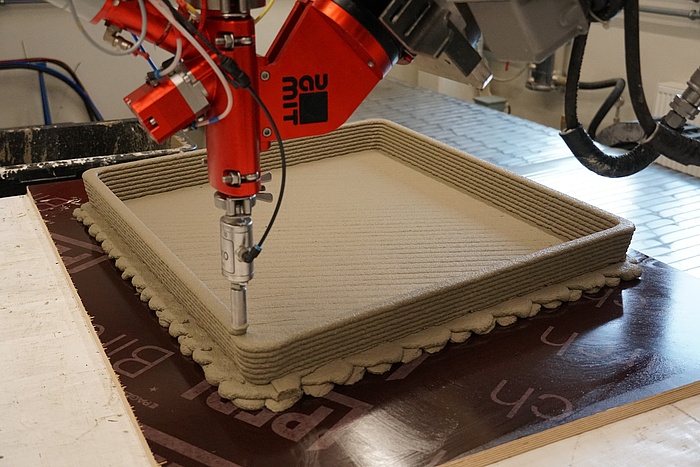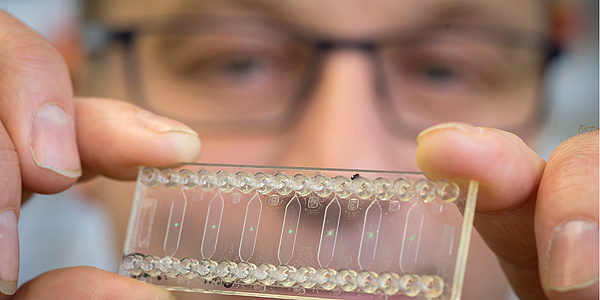Will Emerging Technologies for Building Construction Help Reduce Our Contribution to Climate Change?

Proper methods to estimate the emissions arising from these emerging technologies must be implemented to determine their environmental feasibility. A prospective Life Cycle Assessment study of 3D-printed concrete structures is proposed to investigate whether the technology holdsthe potential to reduce buildings’ contribution to climate change.
Designers, engineers, policymakers and all the different stakeholders involved in the construction sector face increasing pressure to reduce GHG emissions generated during the life cycle of the built environment. While this pressure is shared by almost all sectors in society today, the building and construction sector plays a significant role in the overall carbon emissions generated by mankind. A relatively recent report published by the International Energy Agency’s Global Alliance for Building and Construction showed that almost 40% of CO2 emissions generated in 2017 came from activities within the building and construction sector. Due to the sector’s magnitude and the consequent massive consumption of materials, its potential for lowering the energy need and emissions below business-as-usual-levels is virtually unmatched. This scenario has led to the establishment of various quantifiable targets related to diminishing the greenhouse gas emissions that arise from construction activities. The increasingly stringent targets stimulate researchers into proposing novel technologies related to material composition, material efficiency or construction techniques, promising significant reductions of carbon intensity.
Additive Manufacturing and Construction
An emerging, potentially disruptive, technology that is starting to gain space in the built environment is Additive Manufacturing (AM). Not long ago, discrete initiatives to assess AM’s applicability for building large-scale structures started to arise. In fact, one does not need to look far to find successful examples: the Faculties of Architecture and Civil Engineering Sciences at TU Graz have jointly designed a machining robot system for wet and dry machining of large components. The testing facility, built by ABB AG Austria, is operated primarily by the Institute of Structural Design and the Laboratory for Structural Engineering as a grinding and milling robot system. Moreover, during the last few years the robot facility has been used as a large concrete printing unit.
While the exploration of the interface between robotics and design has been mostly focused on technical and economic feasibility, these studies and research initiatives pave the way for the process’s consolidation in the construction sector. Although promising from a technological standpoint, the incipiency of AM’s environmental impact measurement is quite pronounced. Still, a successful insertion of additive manufacturing technologies within the built environment will depend on its environmental attractiveness. The little evidence that exists points to an impact reduction when assembling highly sophisticated structures, with significant architectural complexity in terms of shape.
Ex-Ante or Prospective Life Cycle Assessment
Life Cycle Assessments (LCA) have been widely recognized as the most scientifically sound option to quantify the environmental impact of buildings and structures. By tracking material and energy flows throughout the life cycle of a product or system, LCAs can assess the potential environmental impacts associated with different components of the built environment. The challenge in the case of emerging technologies, however, is to properly measure material and energy flows of a technology not yet widely implemented in practice. How does one extrapolate, for instance, how much energy is consumed or how much CO2 is emitted from a small labscale to a real-life construction site, where many other variables come into play?
To overcome this, state-of-the-art research in LCA proposes applying upscaling techniques to define scenarios that predict how the performance of robots and 3D-printing processes will evolve in the decades to come. Learning curves from proxy technologies or from the same type of machinery applied to different sectors support this upscaling process and help determine how e.g. energy and material consumption become more efficient as the technology moves towards an industrial scale.
Apart from determining scenarios for future data gathering, due to the major role played by users, building owners, real estate companies and governments on the demand to implement such technique in a wider scope, reliance on agent-based modelling methods to attempt to predict how these players will respond to the emerging technology is also a proposed added layer to ex-ante LCAs.
Prospective Study on the Environmental Feasability of 3D-Printed Concrete Structures
The relevance of the presented subject led to the proposal of a project idea, recently awarded funds from the TU Graz initial funding programme. Spearheaded by a collaboration between the Institute of Structural Design (ITE) and the Sustainable Construction (AGNHB) Working Group, the research project foresees filling the mentioned gaps with a robust ex-ante life cycle assessment applied to 3D-printed concrete large-scale structures. The proposal relies on the hypothesis that (i) 3D-printed concrete structures are an emerging technology that will be increasingly applied in decades to come, displacing traditional construction techniques and (ii) the technology holds the potential to reduce buildings contribution to climate change due to efficiency in material consumption.
The ultimate goal is to identify the pathways in present and future application of 3D printing on the Austrian building stock that would lead to such reduction, with special focus on conditions that would allow for national decarbonization targets to be met by 2030, 2040 and 2050. The proposed research is expected to generate a reliable outcome on how to move forward and successfully integrate additive fabrication into day-to-day construction practice, assuring environmental targets are met.

Figure 2: 3D printing of a concrete element, from the project “Stahlbetonleichtbaudecke - Schloss Seehof”, which funds the PhD research from Georg Hansemann, in collaboration with the ongoing PhD research from Robert Schmid.
Kontakt
Marcella Ruschi Mendes Saade has worked in the field of Life Cycle Assessment and Sustainable Construction for the past 10 years. Since April 2021 she holds a tenuretrack position at the Institute of Structural Design.



